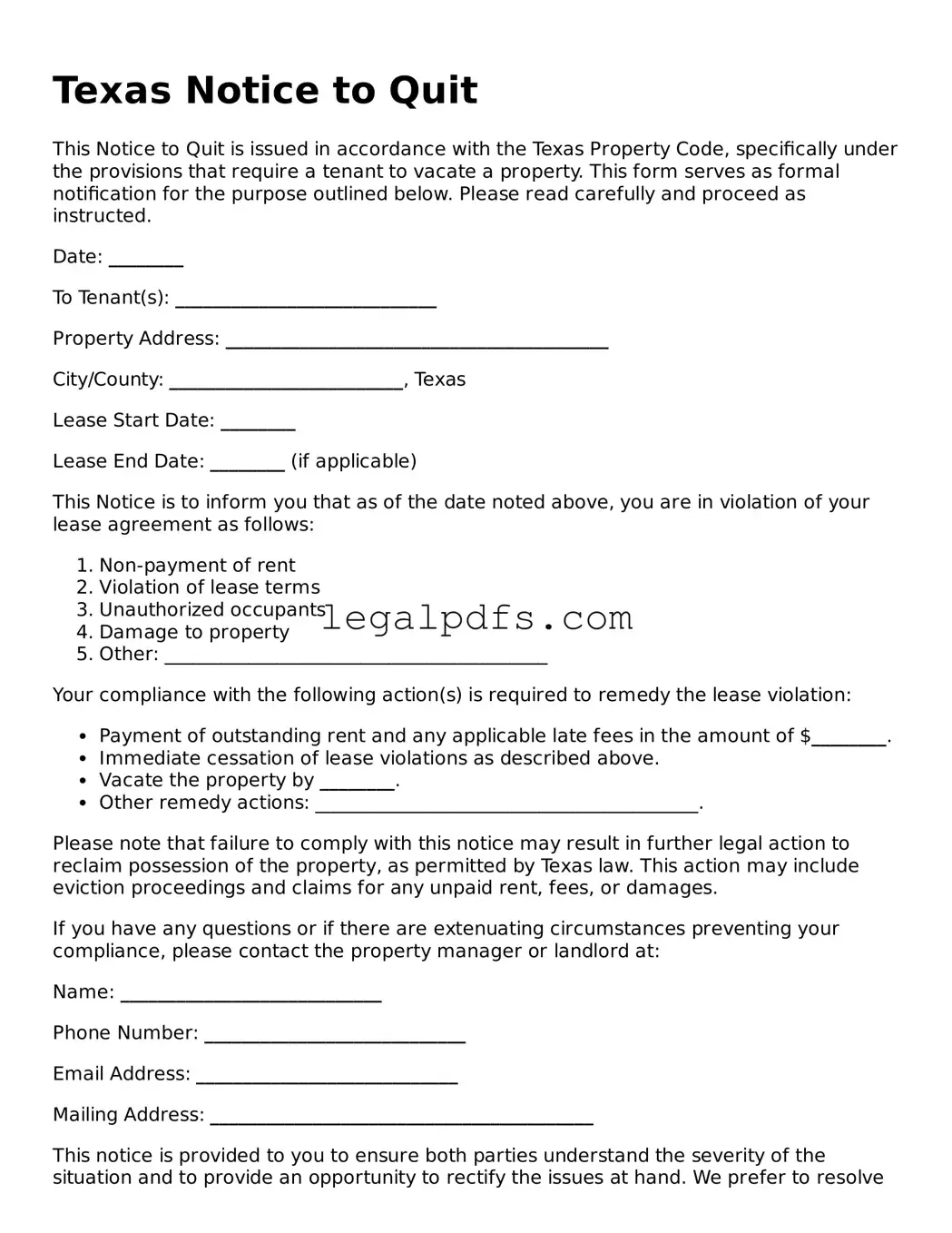Texas Notice to Quit
This Notice to Quit is issued in accordance with the Texas Property Code, specifically under the provisions that require a tenant to vacate a property. This form serves as formal notification for the purpose outlined below. Please read carefully and proceed as instructed.
Date: ________
To Tenant(s): ____________________________
Property Address: _________________________________________
City/County: _________________________, Texas
Lease Start Date: ________
Lease End Date: ________ (if applicable)
This Notice is to inform you that as of the date noted above, you are in violation of your lease agreement as follows:
- Non-payment of rent
- Violation of lease terms
- Unauthorized occupants
- Damage to property
- Other: _________________________________________
Your compliance with the following action(s) is required to remedy the lease violation:
- Payment of outstanding rent and any applicable late fees in the amount of $________.
- Immediate cessation of lease violations as described above.
- Vacate the property by ________.
- Other remedy actions: _________________________________________.
Please note that failure to comply with this notice may result in further legal action to reclaim possession of the property, as permitted by Texas law. This action may include eviction proceedings and claims for any unpaid rent, fees, or damages.
If you have any questions or if there are extenuating circumstances preventing your compliance, please contact the property manager or landlord at:
Name: ____________________________
Phone Number: ____________________________
Email Address: ____________________________
Mailing Address: _________________________________________
This notice is provided to you to ensure both parties understand the severity of the situation and to provide an opportunity to rectify the issues at hand. We prefer to resolve this matter amicably and urge you to take immediate steps to correct the lease violations noted above.
Regards,
_______________________________________
Landlord/Property Manager Signature
Date: ________
